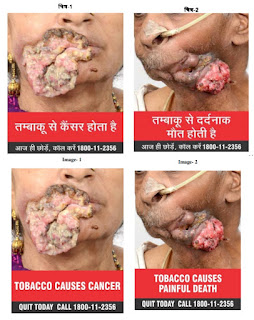 Kerala Government will take the lead in the campaign for making the state tobacco-free, Hon’ble Health Minister Smt K K Shylaja said here today on the World No Tobacco Day (WNTD), while announcing some immediate steps to move in that direction.
Kerala Government will take the lead in the campaign for making the state tobacco-free, Hon’ble Health Minister Smt K K Shylaja said here today on the World No Tobacco Day (WNTD), while announcing some immediate steps to move in that direction.
Highlighting the significant achievement of over 8 per cent reduction in overall tobacco use among adults in the state, as revealed in the second edition of the World Health Organisation’s Global Adult Tobacco Survey (GATS -2), the Minister said all Government health institutions including those in the AYUSH sector will be made tobacco free.
Infrastructure for tobacco cessation would be enhanced by starting tobacco cessation clinics in all Family Health Centres and AYUSH clinics, besides integrating tobacco control with ‘Swaas’ under the ‘Aardram’ programme of the Government.
“Increasing use of tobacco products amongst our youngsters is an area of concern,” the Minister said, and called for a war against drug-laced candies that are now easily available to students and youngsters.
Kerala’s cricket sensation Shri Sanju V Samson, who was the star attraction at the event organised jointly by Government agencies and civil society groups to mark the day, affirmed that he will refuse any tobacco products endorsement offers, triggering a loud applause from the audience.
He called upon children to develop the mental strength to be able to say a strict “no” to tobacco.
Shri Samson also led a pledge against tobacco use and appealed to all participants to put the oath into practice. “Pledge to protect at least two of your friends from tobacco,” he exhorted the youngsters present.
Inspector General of Police Shri P Vijayan pointed out that India has over 40 crore children below the age of 15. “If groomed correctly, these youngsters can be shining ambassadors for the country, else India would have to take the blame for creating a generation with eroded values,” he cautioned.
A committed tobacco control advocate, Shri Vijayan added that it is important to give the needed support to youngsters prone to tobacco use, rather than condemning them.
Dr Asha Kishore, Director, Sree Chitra Tirunal Institute of Medical Sciences and Technology (SCTIMST), spoke about the association of tobacco use with stroke and cardiovascular diseases.
Dr Paul Sebastian, Director, Regional Cancer Centre, also emphasised the importance of targeted tobacco control interventions for youngsters.
Dr V R Raju, Director of Health Services (in-charge), delivered the welcome address, and Dr V Ramankutty, Director, Achutha Menon Centre for Health Science Studies (AMCHSS), proposed a vote of thanks.
In the technical session earlier, experts spoke about tobacco problems in Kerala as revealed by GATS 2, control opportunities for the Government and the civil society, problems in educational institutions, role of social media and tobacco industry tactics.
In line with this year’s theme of ‘Tobacco Use and Heart disease’, the technical session detailed how tobacco use endangers heart health and about the Government’s plans for augmenting tobacco control. Findings of a recent study assessing the sales and purchase patterns of cigarettes and other tobacco products in three cities of Kerala were also presented.
Dr KR Thankappan, Professor Emeritus, AMCHSS; Dr S Sivasankaran, Professor of Cardiology, SCTIMST; Dr AS Pradeep Kumar, Former Addl Director of Health Services; Dr Kamala Rammohan, Member, Health Action by People; Dr Manu MS, State Consultant, National Tobacco Control Programme; Shri RS Shibu, Joint Director, DPI; Dr Nelson Joseph, Info Clinic, Mr Saju Itty, Executive Director, Kerala Voluntary Health Services were the speakers. Dr Sanjeev Nair, Associate Professor, Government Medical College, Trivandrum moderated the technical session.













